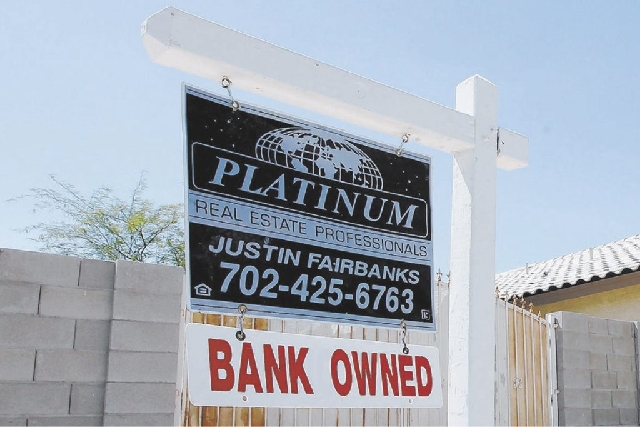Half of Nevada foreclosed homes are vacant, abandoned
Delays in the foreclosure process are leaving thousands of Nevada homes vulnerable to vandalism and deterioration, an executive for RealtyTrac said Thursday.
Roughly half of foreclosed homes in Nevada are “zombie foreclosures,” or properties flagged as vacant or abandoned, said Daren Blomquist, vice president for the Irvine, Calif.-based online listing service.
In many cases the delinquent owner vacated the home expecting it to go to foreclosure, and may not realize the property has yet to be scheduled for trustee sale, he said.
That means the homeowner is still responsible for — but not paying — maintenance and property taxes.
Kentucky was identified as having 54 percent vacant foreclosures, followed by Indiana and Maine at 53 percent.
This was RealtyTrac’s first analysis of such data based on U.S. Postal Service records, so there is no comparison data from previous quarters, Blomquist said.
“When you’re dealing with this, there’s always going to be exceptions,” he said. “Second homes, vacation homes — people are gone half the year. This is people who have completely vacated the property.”
Rick Phillips, president of FTN Financial Main Street Advisors, said “zombie foreclosures” are definitely a material problem for Las Vegas and will put downward pressure on home prices.
He also expects to see prices decline if Nevada’s robo-signing law is revised in the Legislature.
Florida leads the nation with 90,556 owner-vacated foreclosures. Illinois is next with 31,668, followed by California with 28,821 and Ohio with 17,367.
Nevada is No. 13, with 6,070 vacant foreclosures.
The total number will be skewed toward states with higher populations, Blomquist noted.
The inventory of U.S. homes in foreclosure rose 9 percent in the first quarter, although Nevada saw a 30 percent decrease, the foreclosure analyst said.
The annual increase in national foreclosure inventory was caused by a 59 percent jump in preforeclosure inventory, or properties that received a notice of default. Inventory of homes scheduled for foreclosure auction decreased 25 percent and the inventory of bank-owned homes decreased 3 percent.
One figure that stood out for Nevada is the 22 percent increase in “front end” inventory, or homes that have received a notice of default, Blomquist said. It’s up 22 percent from a year ago, to nearly 10,000 as of mid-March.
RealtyTrac reported a
69 percent decrease in notices of trustee sale for the first quarter in Nevada, and a 31 percent drop in back-owned homes, or actual foreclosures.
The so-called “shadow inventory” of homes that have entered the foreclosure process but have not yet been listed for sale may provide hope in markets hungry for more inventory, Blomquist said.
Many of those properties will be listed as short sales in the next six to 12 months, or they’ll go through foreclosure and eventually come on the market as bank-owned properties in the next 18 months, he said.
Contact reporter Hubble Smith at
hsmith@reviewjournal.com
or 702-383-0491.






















